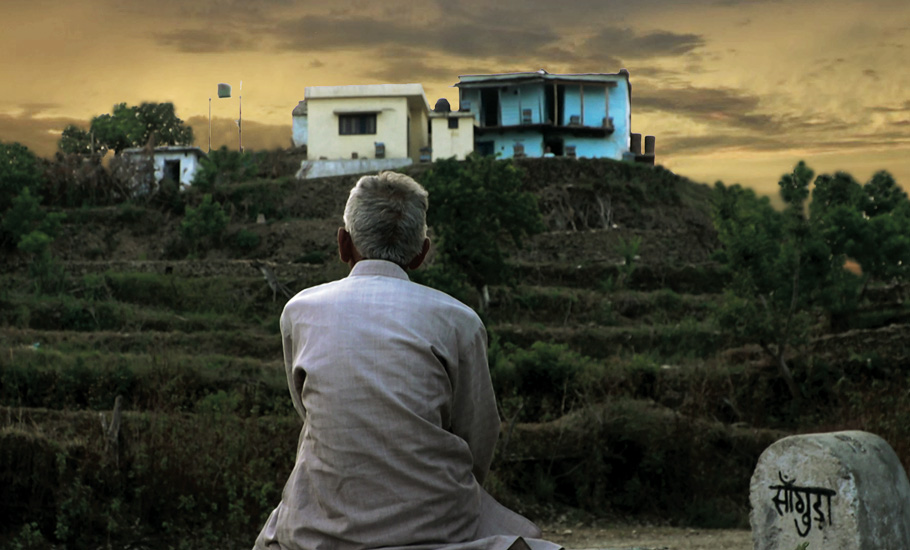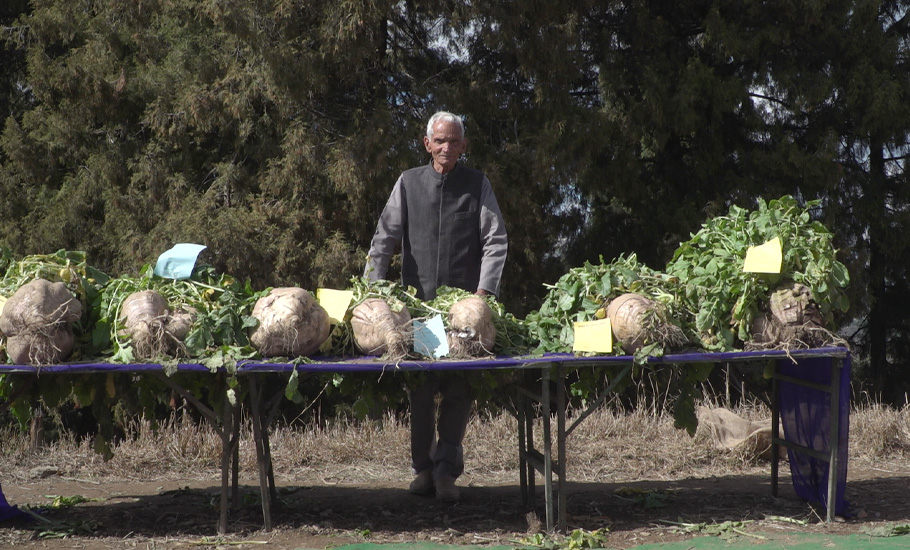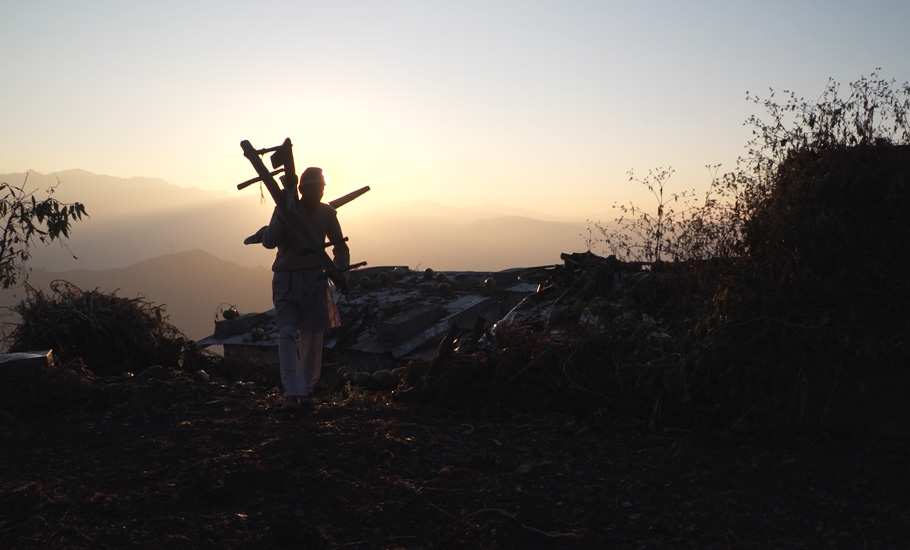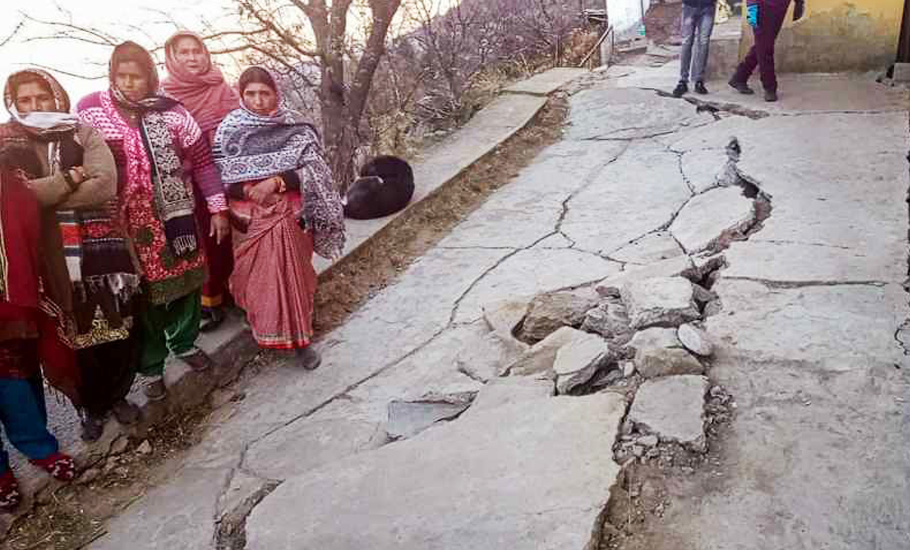
- Home
- News
- Analysis
- States
- Perspective
- Videos
- Education
- Entertainment
- Elections
- World Cup 2023
- Features
- Health
- Budget 2024-25
- Business
- Series
- NEET TANGLE
- Economy Series
- Earth Day
- Kashmir’s Frozen Turbulence
- India@75
- The legend of Ramjanmabhoomi
- Liberalisation@30
- How to tame a dragon
- Celebrating biodiversity
- Farm Matters
- 50 days of solitude
- Bringing Migrants Home
- Budget 2020
- Jharkhand Votes
- The Federal Investigates
- The Federal Impact
- Vanishing Sand
- Gandhi @ 150
- Andhra Today
- Field report
- Operation Gulmarg
- Pandemic @1 Mn in India
- The Federal Year-End
- The Zero Year
- Premium
- Science
- Brand studio
- Home
- NewsNews
- Analysis
- StatesStates
- PerspectivePerspective
- VideosVideos
- Entertainment
- ElectionsElections
- Sports
- Loading...
Sports - Features
- Budget 2024-25
- BusinessBusiness
- Premium
- Loading...
Premium

How Uttarakhand’s Moti Bagh stands between hope and despair

Seeing the rising number of ‘locked’ houses as a symbol of mass migration in Sanguda village in the Pauri Garhwal district of Uttarakhand, poet-farmer Vidyadutt Sharma did two things: First, he expressed his disappointment through poems that he wrote every night after the day’s work. Second, he nurtured his five-acre farm called Moti Bagh, which is surrounded by more than 7,000...
Seeing the rising number of ‘locked’ houses as a symbol of mass migration in Sanguda village in the Pauri Garhwal district of Uttarakhand, poet-farmer Vidyadutt Sharma did two things: First, he expressed his disappointment through poems that he wrote every night after the day’s work. Second, he nurtured his five-acre farm called Moti Bagh, which is surrounded by more than 7,000 deserted villages in Uttarakhand. Despite leopard attacks, monkey menace and forest fire, the 87-year-old’s attempt was a symbol of resistance, using traditional, ecocentric farming practices.
A survey expert with the state government, Sharma left the job to choose farming when he was 28 years old. Even though Sharma has been working on his farm for more than five decades, it was after the release of Moti Bagh, a 60-minute-long documentary on Sharma’s unending struggle to fill the vacuum caused by mass migration in Uttarakhand in 2019, that he became popular outside his Himalayan village. Soon, Sharma was in the news for world’s heaviest radish weighing 23 kg that he cultivated in his farm. The documentary evoked tremendous response. It was nominated for the Oscars in 2019, and won many accolades including the best Indian feature at the second edition of All Living Things, Environmental Film Festival, India’s first and only environment cinema-based festival, in 2021.

It has been four years since the documentary was released, but the situation in and around Moti Bagh remains the same. “Migration is a serious problem here. Lack of opportunity to generate income leads to migration. The villagers leave for towns in search of better pastures. Migration is not an overnight development, it has been happening for quite a long time,” said Nirmal Chander, director of Moti Bagh.
When Nirmal Chander shot the documentary in 2019, he visited many deserted villages in Uttarakhand. “Even though the documentary helped us create awareness among people about their land, the situation is more or less the same today. We thought more people would return after the pandemic but only a few returned to the villages,” he said.
However, Vidyadutt Sharma has become more active. Consolidation of agricultural land, according to him, is the need of the hour.
“Many villagers have land that lie spread all over. If you want to keep the mountains and the villages alive, if you want to create job opportunities for the youth, then the only option is to consolidate their scattered land,” he said. “But this is a huge political issue. No government will do it easily as it could upset its vote bank. The biggest reason for my freedom today is that I have consolidated my land so I am able to grow whatever vegetables and fruits I want,” he added. Land consolidation is a planned readjustment and rearrangement of fragmented land parcels and their ownership.
A year ago, Vidyadutt Sharma’s son Tribhuwan launched a home-stay at Moti Bagh for outsiders to come and experience the farm. “I am at the homestay. It is a great experience where we can learn the basics from Vidyadutt Sharma,” said Nirmal. Moti Bagh was screened as part of the People’s Film Collective’s monthly screenings and conversations series in Kolkata recently. There was a talk by activist Atul Sati on the crisis in Joshimath after the screening. The five-acre land, developed by farmer-activist-poet Vidyadutt Sharma brings in hope, while the unbridled construction in Joshimath despair.

Joshimath, a ‘scenic’ town nestled in the foothills of the Himalayas, is sinking under its own weight. Environmentalists say its foundation is weak as it sits atop a glacial moraine, leaving it vulnerable to earthquakes. Rapid urbanisation, mainly construction activities, added to its woes. Experts attribute this construction boom to the widening of the Char Dham Yatra road and National Highway 7, which are frequented by tourists and used to transport cargo to reach the holy shrine of Badrinath every year.
The Tapovan Vishnugad hydel project by NTPC Limited has also contributed to the situation. “The current crisis in Joshimath is a result of prioritising economics over a fragile ecology or the Himalayan ecosystem. The development model that has been followed for years has led to the open plundering of natural resources, ultimately leading to the present situation,” said Atul Sati, the convener-president of Joshimath Bachao Sangharsh Samiti, which is spearheading the movement against maldevelopment and advocating for proper rehabilitation of affected people and preservation of the ecology.
Sati told The Federal that cracks can still be seen in many houses and roads in Joshimath. What led to the tragedy of this favourite hiking and pilgrim destination? “The Mahesh Chandra Mishra Committee had warned that construction in Joshimath should be limited even in 1976 itself. But the Central government didn’t take it seriously. It is now going ahead with its mega projects without considering the fragile nature of the region,” he said.
Many houses in Joshimath developed cracks in January 2023. The disaster bulletin, published by the Joshimath administration on May 8, 2023, said there are 868 buildings in Joshimath that have developed cracks. Atul Sati said the Himalayas are being crushed in the name of development and Joshimath is not the only victim.

“Various construction activities using heavy machinery for the National Thermal Power Corporation (NTPC) and Tapovan Vishnugad Hydro Projects are destroying the region. The widening of the Char Dham road which connects the temples of Kedarnath, Badrinath, Gangotri and Yamunotri, adds to the woes. The government is destroying the fragile Himalayan ecology by using heavy machines. We have been raising voices against this for a long time. We will continue our fight,” he said.

